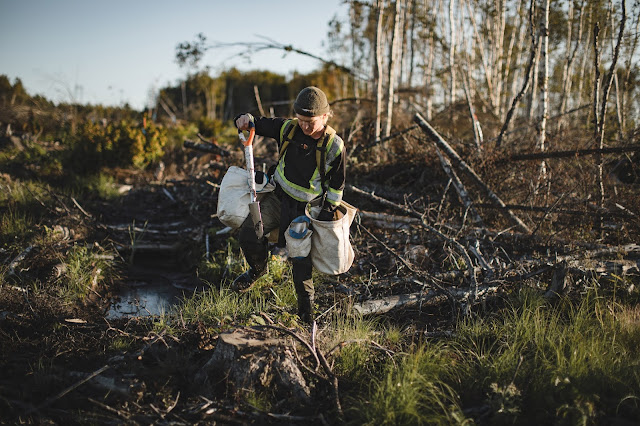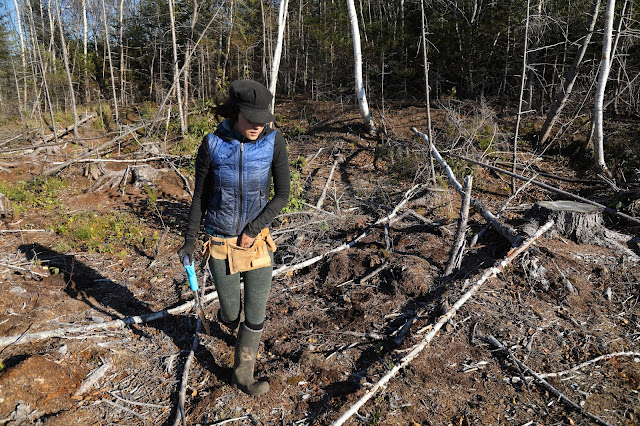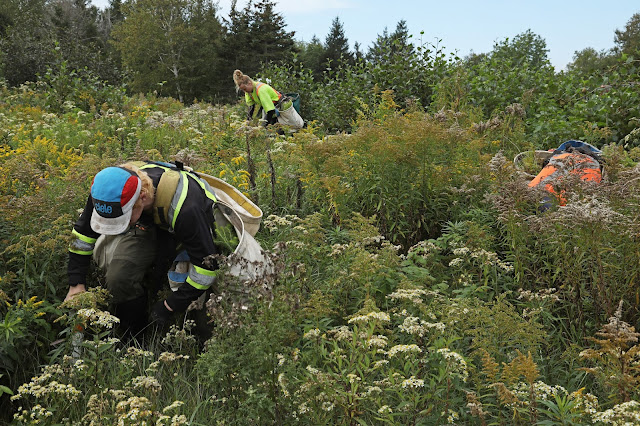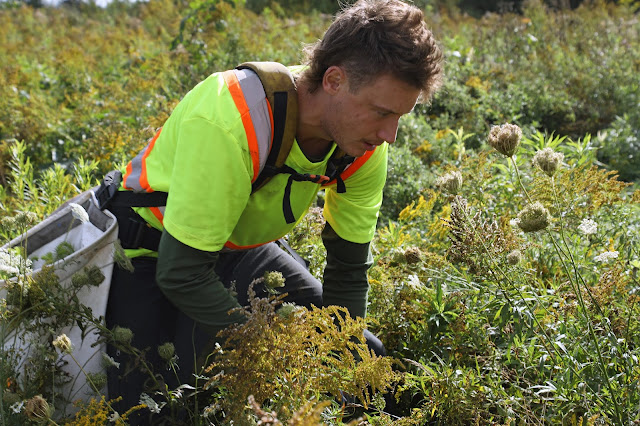Our organization did some tree planting work in southeastern New Brunswick this past September (2021). This was one of the carbon capture plantation projects that we designed for Tentree International.
You've probably heard of Tentree Clothing. If not, here's a link to their story:
www.businessinsider.com/tentree-sustainable-clothing-review
This particular site was a mid-sized project, where we planted slightly over 60,000 trees. On this particular site, we planted sixteen distinct species. That mix included conifers, oaks, birches, sugar maples, butter nut, and more.
One nice characteristic about this site is that it's really easy to find, if you'd like to explore one of Tentree's projects. Tens of thousands of people drive within a hundred feet of this site every day, as they travel on the TransCanada highway through southeastern New Brunswick. If you're on the TCH travelling from Moncton to Nova Scotia, you'll see this site on the right/south side of the highway, approximately four kilometers before the exit onto Walker Road (exit 500) close to Sackville. The border between New Brunswick and Nova Scotia is just a ten minute drive down the highway. Here's a more detailed map, courtesy of Google Earth:
The work that Tentree has been doing has been exhaustive. To date, they've helped to fund the planting of more than sixty-six million trees in a number of countries around the world. And they have a very inspiring goal ... to plant ONE BILLION trees by 2030. That will be an tremendous achievement. Replant.ca Environmental is incredibly excited to be a small part of that massive plan.
Tentree is very scientific about their approach to all of this planting. They're diligent about ensuring that the planting projects are audited and verifiable. Some of their technology is cutting edge, such as drone mapping software that provides photographic documentation of the sites. They work with a block-chain based project called Veritree, which was designed to verify the legitimacy of global reforestation projects. Anyone who is interested in blockchain or auditing or GIS work should check out the Veritree website:
Here are a few photos of our crew at work on this site in September. Special thanks to Kalen Emsley and Tom Miller from Tentree for coming to visit this site to map out and verify the planting, and for doing the photography work that they shared with us.
As a side note, we returned to this site six weeks after this project was finished so we couldo plant a large number of acorns and chestnuts. Seeds/nuts are not trees, and these were not counted in the tree totals! This was just an experiment to see if we could have an additional impact upon a portion of the site by doing some late fall planting of some nuts that we had gathered, since we've been experimenting for the past couple years with growing various hardwood seedlings of our own. Here's a photo of Dee, planting some of the acorns and chestnuts:
Our goal for this exercise was academic. We do not want to stop planting young trees in the future. Rather, we're interested in learning more about germination rates for these species in various types of soils in real-world conditions.
The impact that Tentree is having on our global community is profound. We're very proud to be one of their many global reforestation partners.
You can see more photos of our 2021 tree planting work in our public 2021 Planting Photos folder on Dropbox.
Thanks for reading!
Replant.ca Environmental is a Canadian company that plants trees for carbon capture and builds community forests. We also plant trees in national, provincial, and municipal public parks to mitigate damage from wildfires, storms, insects, and forest diseases. We operate thanks to numerous small contributions from the general public, in addition to larger project sponsorships from businesses and corporations around the world. If you'd like to learn how to show your support, visit our donations page. Even if you aren't able to make a contribution, we very much appreciate when people are able to share our posts or our website link on social media, to help spread the word about the work that we're doing!
To learn more about the various species that we plant, visit the conifers page or the deciduous (hardwoods) page on our website. Thanks so much for your interest!
Incidentally, our organization is often seeking additional land for our carbon capture projects. Please visit this link if you might know of a recently-harvested property that we could rebuild into a permanent legacy forest.



















































